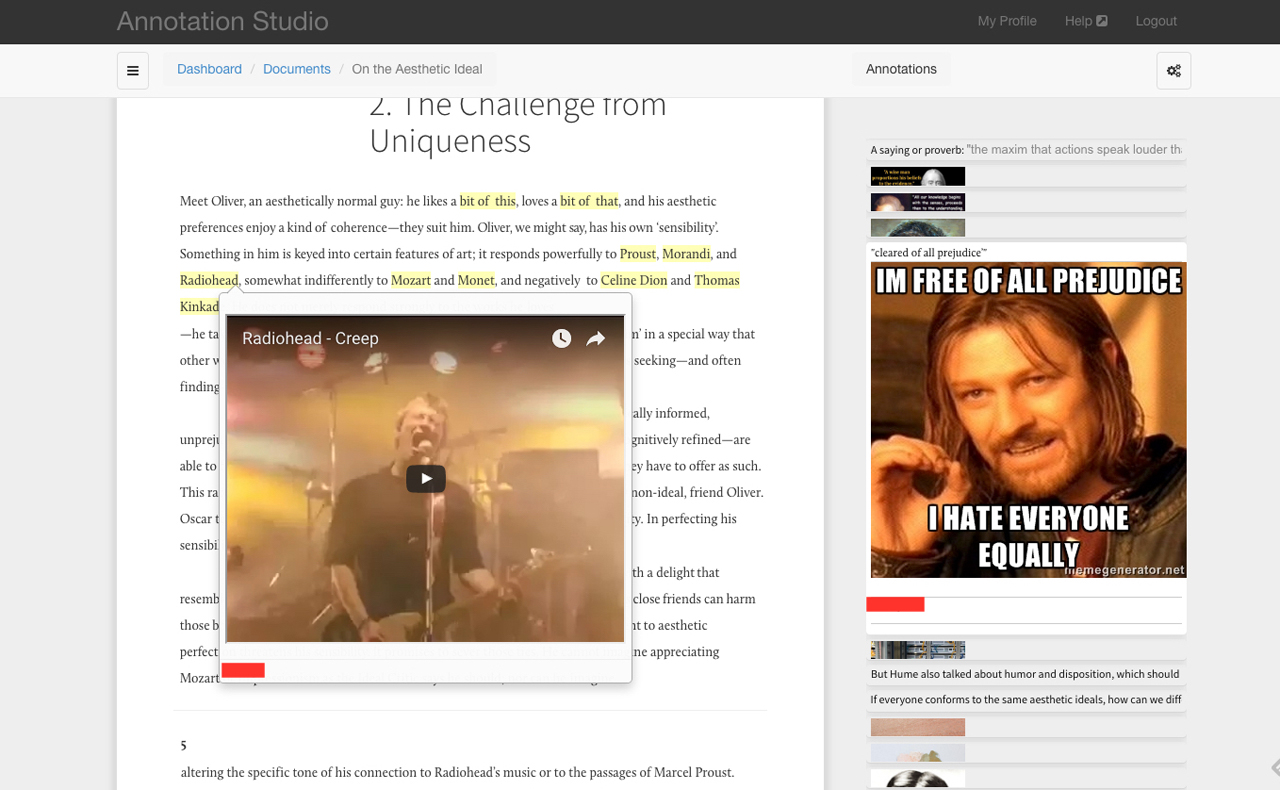Philosophy of Art
Annotation Studio in Philosophy of Art
PHIL 203 • Erich Matthes

A course reading that students annotated with text and media using Annotation Studio.
My blended learning project is intended to enhance the online and interactive components of PHIL 203: Philosophy of Art, specifically with respect to some of the unique challenges and opportunities the course presents. One of the features that makes the course so rewarding is that it draws students from across the curriculum (no fewer than 16 different majors were represented this past semester). The challenge this presents is that students do not necessarily share a common core of knowledge and experience with art, and the readings make a lot of references to specific artworks. When I first set up the course, I experimented with creating Artstor image galleries to accompany some of the readings, so that the students would have easy access to the works being referred to in the texts. Unfortunately, Artstor's interface is a little clunky, and though I tried to present the images in the order they come up in the relevant reading, it is difficult for the reader to keep the texts and images “synced” across two different platforms (Artstor and the pdf reading). I really don't get the sense that students used this resource, given the challenges.
The course also enrolls a large number of students (26-32 in recent semesters). While it is exciting that so many students are interested in the course, it presents challenges for running the kind of discussion-oriented classroom that I believe is important to a sound philosophical education. In order to aid with solving this problem, I had been requiring the students to write and respond to Critical Discussion Questions (CDQs), which they post in a dedicated Google Group forum. I gather from SEQs that students find these helpful to write, but unfortunately I don’t think they read each other’s CDQs nearly enough (the forum has a “view” counter that confirms this).
In order to address these dual challenges, I worked with a student assistant to migrate the course readings into an open-source platform called Annotation Studio. Regarding the first challenge, it allows students to annotate all of the readings with images, audio, and video: this way, artworks referred to in the readings are available right there in the text. Each student is responsible for doing one set of rich "Media Annotations" the week before the reading is due, so that the other students have these reference points when they do their reading. Regarding the second challenge, Annotation Studio provide a platform where students can annotate their discussion questions right into the reading, making it easier for the students to see and respond to other students’ questions in-text. By reducing the number of distinct online tools used in the course, Annotation Studio offers a more integrated and collaborative experience.
Initial responses to Annotation Studio from students are positive, though not universally so. One of the major remaining hurdles is that many students still prefer to do their reading on paper, and so they only see the annotations when they go to the website after having read the printed-out texts.


